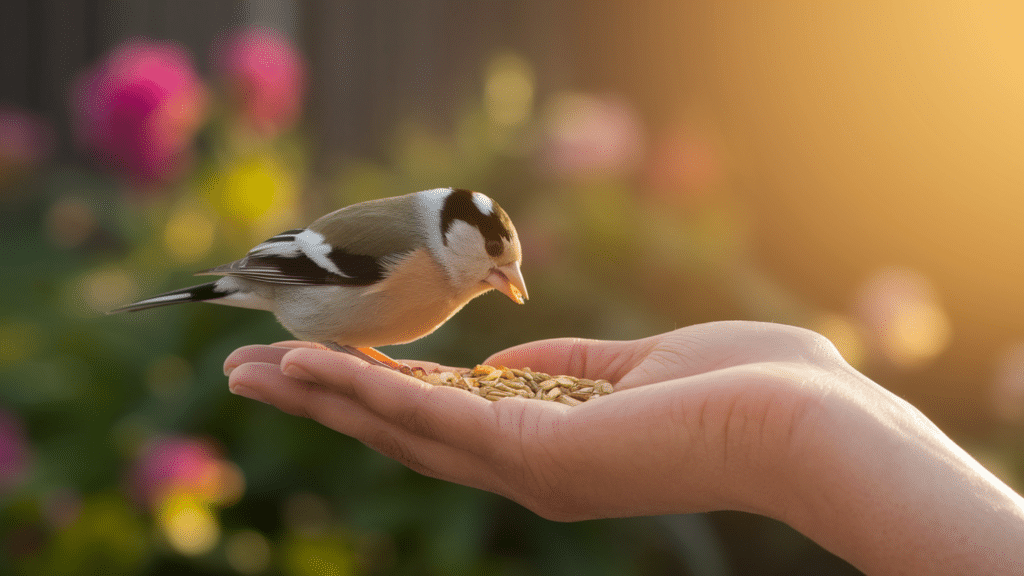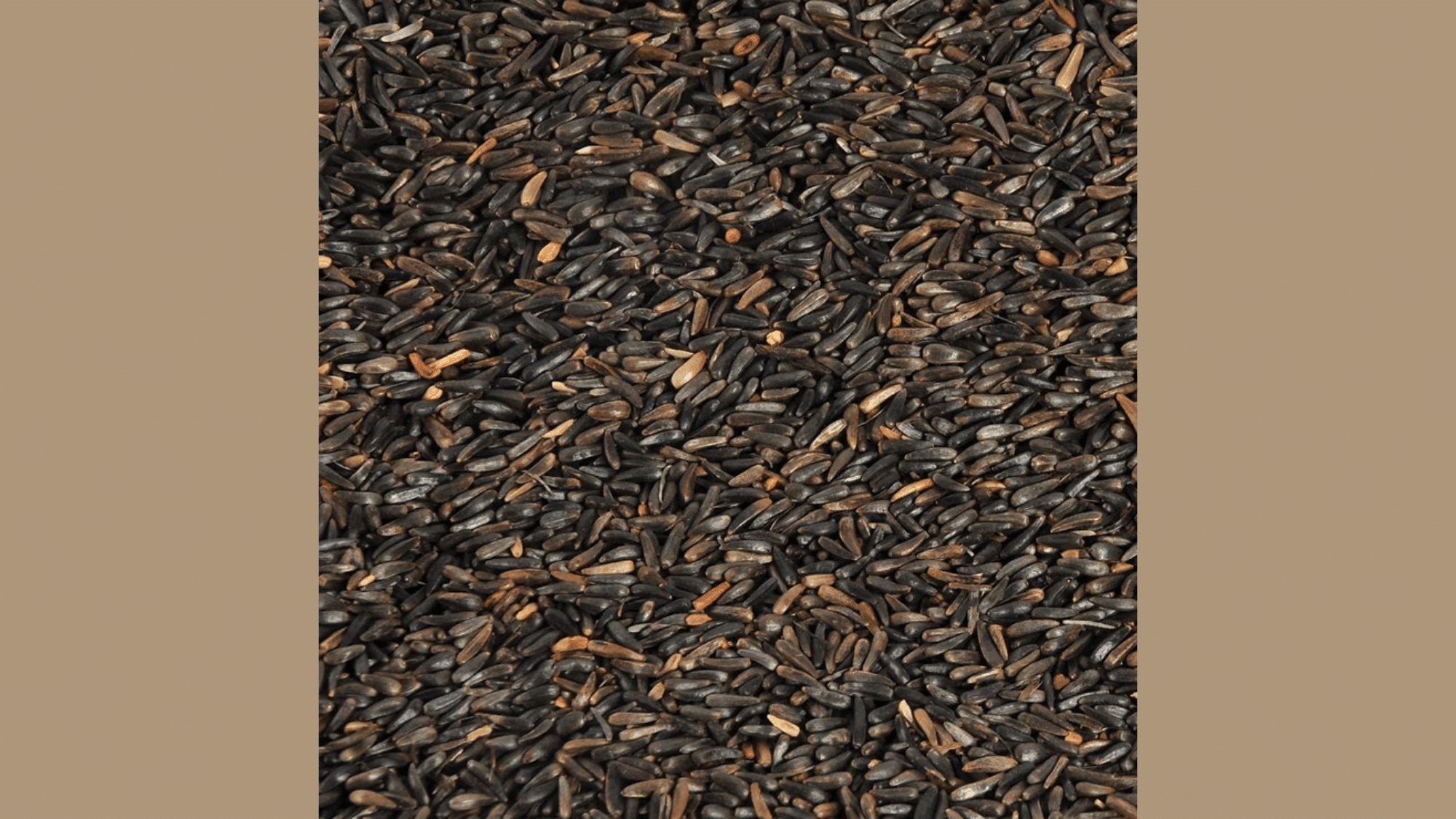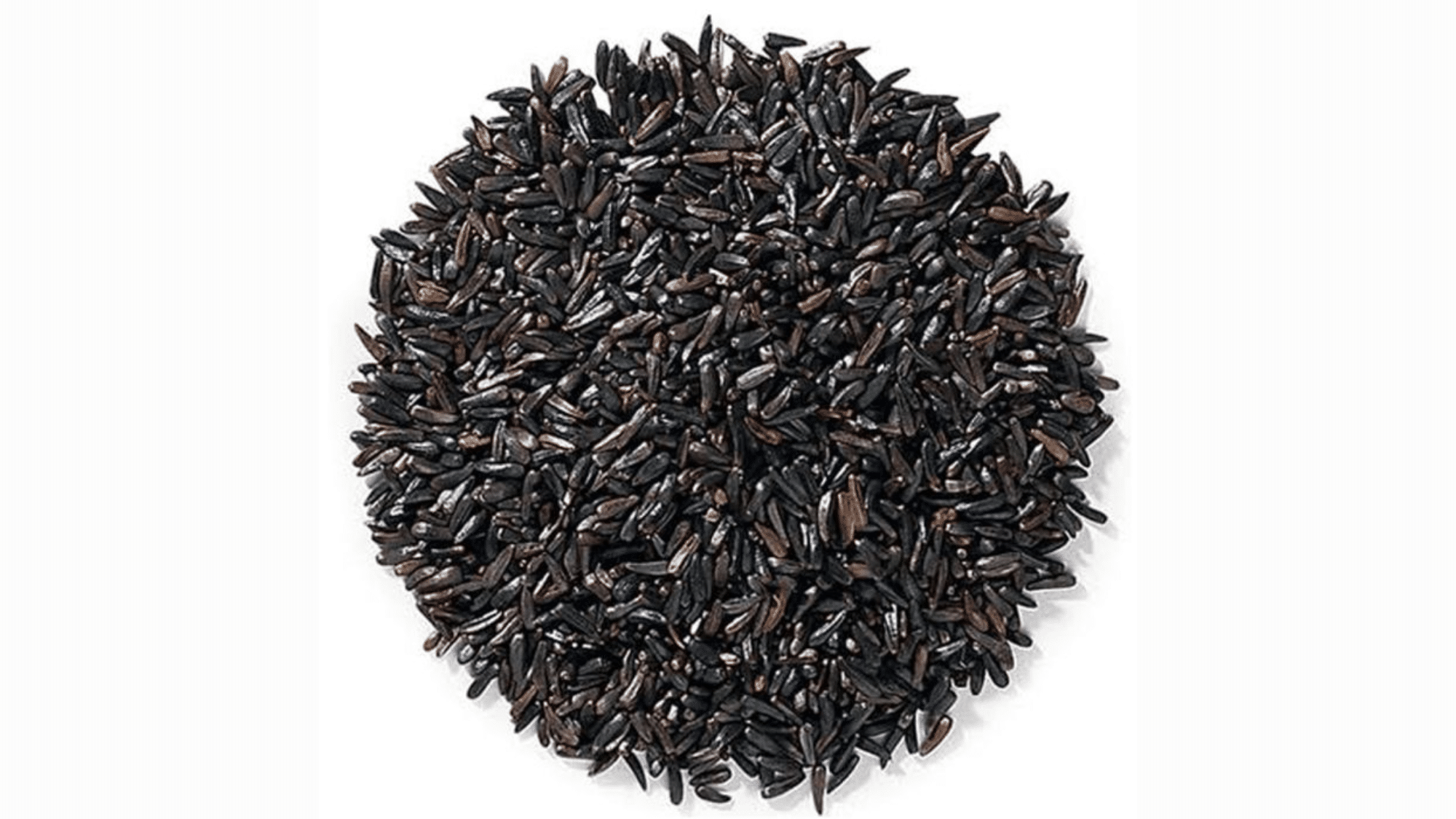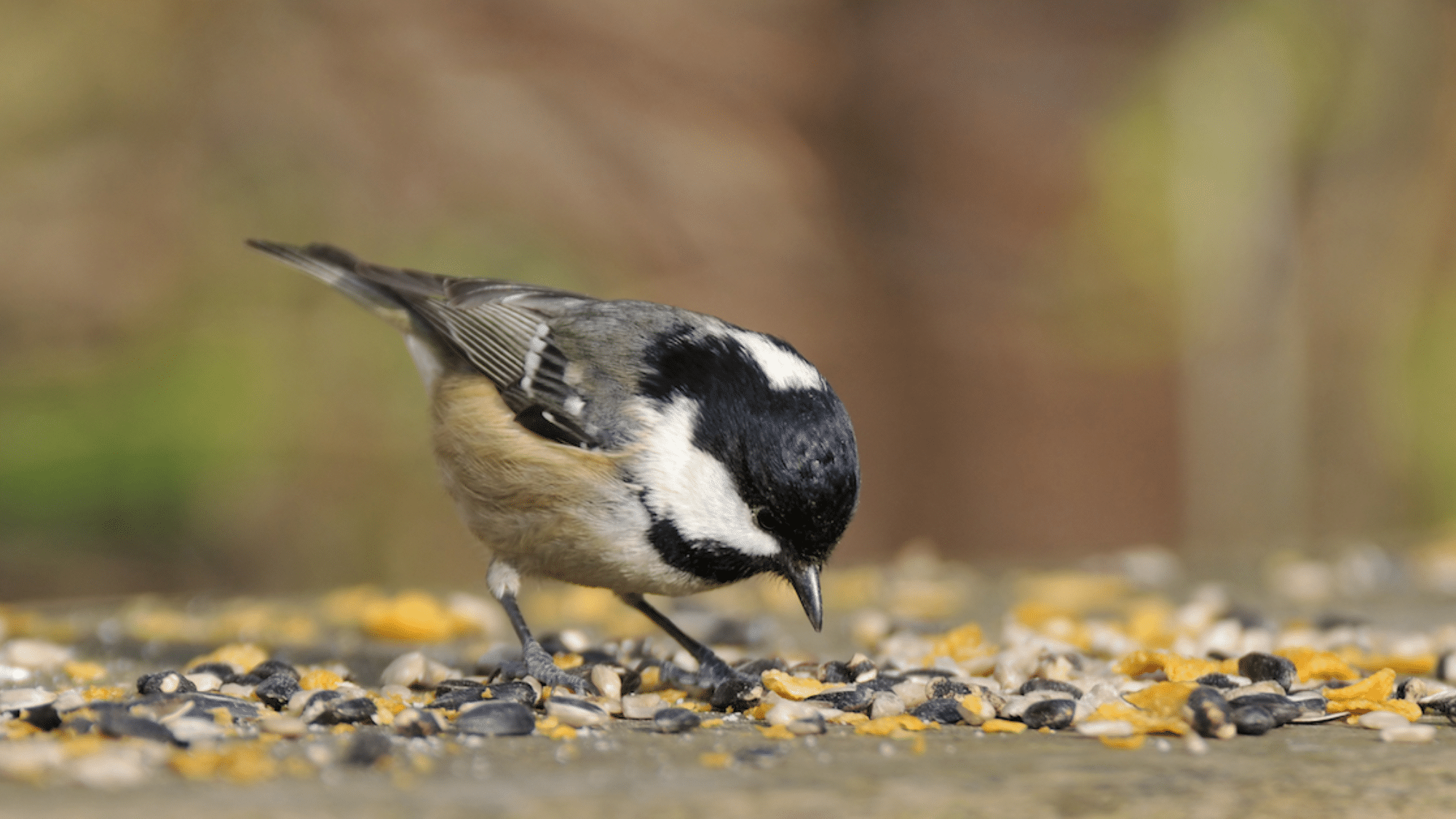Bird lovers often spot tiny black seeds in specialty feeders, attracting colourful finches. These are Nyjer seeds from African yellow daisies grown mainly in Ethiopia.
The seed industry has used various names for these small bird treats over the years, which has led to some naming confusion.
Eventually, the USDA stepped in with official terminology to help customers know what they are buying.
So, before diving into the details, let’s clarify what Nyjer seed and Thistle seed are.
What are Nyjer Seeds?
Nyjer seeds come from an African yellow daisy (Guizotia abyssinica).
They grow primarily in Ethiopia and other parts of East Africa. Farmers also cultivate these tiny black seeds in India and Southeast Asia.
These small, thin black seeds measure about 3-4mm long. Their oil content exceeds 30%, making them rich food for birds.
They have shiny exteriors and remain quite fragile when handled.
Nyjer seeds contain high amounts of oil and protein beneficial for birds.
They provide essential fatty acids, calcium, and other minerals. Wild finches particularly favour these seeds during cold months for their caloric density.
What are Thistle Seeds?
Milk thistle, bull thistle, and Scotch thistle represent common varieties that produce seeds.
Each plant grows spiny leaves and produces fluffy seed heads. These plants exist throughout North America, Europe, and Asia.
Thistle seeds appear small, often with feathery attachments for wind distribution. Their lightweight helps them travel long distances.
Most seeds have flat, oval shapes with smooth shells.
Birds consume thistle seeds as natural food in the wild. Gardeners plant certain varieties for their ornamental flowers.
Some thistle species, like milk thistle, serve medicinal purposes in herbal preparations.
Are Nyjer and Thistle Seeds the Same?
No, Nyjer seeds and thistle seeds come from completely different plant families.
The confusion stems from marketing practices where Nyjer seeds were once sold as thistle seeds to bird enthusiasts.
This naming issue caused many people to believe they were identical products.
Scientific Classification
- Nyjer seeds come from Guizotia abyssinica, a plant in the Asteraceae family native to Ethiopia
- True thistle seeds come from plants in the Cirsium, Carduus, and Silybum genera
- Though both belong to the broader sunflower family, they represent distinct plant types with different characteristics
Historical Naming Background
- The name thistle seed for Nyjer was a marketing choice, not a botanical classification
- The USDA later standardised Nyjer as the official name to reduce confusion
- Some bird seed companies still reference the thistle connection, which continues the misunderstanding among consumers
The marketing name thistle likely gained popularity because finches that eat Nyjer also eat true thistle seeds in the wild, creating an association that seemed logical to seed retailers.
The Key Differences Between Nyjer vs Thistle Seeds
| FEATURE | NYJER SEEDS | THISTLE SEEDS |
|---|---|---|
| Origin | Native to Ethiopia and East Africa | Various species are found worldwide |
| Size | Very small, black seeds | Slightly larger than Nyjer |
| Oil Content | 30-40% oil | Variable, typically 15-25% oil |
| Bird Appeal | Goldfinches, siskins, redpolls | Goldfinches, siskins, and other finches |
| Cost | More expensive | Generally less expensive |
| Storage Needs | It can go rancid quickly | Better shelf life |
| Feeding Method | Requires a special feeder with small holes | Can use regular or specialised feeders |
| Growing Conditions | Warm climate annual | Various, many are hardy perennials |
| Invasive Potential | Low, seeds are often sterilised | High for some species |
| Nutritional Value | High protein, fat | Moderate protein, varied fat content |
Certain Bird Feeding Applications to Check Out
Understanding the right seeds, feeders, and seasonal tips helps attract a variety of birds while keeping feeding areas clean, safe, and bird-friendly year-round.
1. Which Birds Prefer These Seeds?
Understanding which feathered visitors love these tiny seeds helps you attract the right species to your backyard feeding station.
- American Goldfinches, Pine Siskins, and Common Redpolls are the top fans of both Nyjer and thistle seeds.
- House Finches and Purple Finches will eat them, but typically prefer larger seed varieties.
- Lesser Goldfinches in western regions readily consume both seed types year-round.
- Small songbirds with specialised beaks handle these tiny seeds most effectively.
- Chickadees and nuthatches occasionally snack on them as supplemental treats.
2. Feeding Methods and Equipment
The right feeder setup makes all the difference in attracting birds while keeping seeds fresh and minimising waste.
- Tube feeders with tiny holes prevent spillage and keep seeds dry during wet weather.
- Mesh sock feeders allow birds to cling naturally while extracting seeds through small openings.
- Regular cleaning every 2-3 weeks prevents seed spoilage and reduces disease transmission.
- Position feeders 10-12 feet from shrubs to provide safe escape routes from predators.
- Small catch trays beneath feeders minimise ground waste and deter unwanted wildlife.
3. Seasonal Considerations
Birds’ nutritional needs change dramatically throughout the year, making seasonal adjustments essential for successful backyard bird feeding.
- Winter feeding provides crucial energy when natural food sources become scarce and birds need extra calories.
- Spring brings breeding birds that require additional nutrition for healthy egg production and chick development.
- Fall migration periods show increased activity as birds fuel up for long-distance travel.
- Seed consumption spikes before storms as birds instinctively stock up on energy reserves.
- Hot weather accelerates spoilage, requiring more frequent seed replacement to maintain freshness.
The Bottom Line
The confusion between Nyjer and thistle seeds shows how marketing can muddy botanical facts.
These seeds differ in origin, size, oil content, and storage needs, but both attract similar birds like finches.
Each season brings different feeding patterns, and winter months see higher seed consumption as natural food becomes scarce.
By picking the right seeds and feeders, you will create a welcoming spot for feathered visitors all year long without wasting money on products that spoil quickly.























